Search Results
Fine Jewelry University Articles matching: “646 VI 14 my gold”
Showing only FJU Article results. Click here to show all results.
Fine Jewelry University (Show All FJU Articles)
-
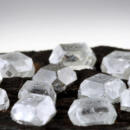
Is a Lab Grown Diamond Right for Me?
… Balance , our own collection of unique engagement rings made exclusively with lab …. Pros, the benefits of lab grown diamonds The first and most often cited benefit of lab-grown diamonds is their environmental sustainability . While this issue hasn’t been full studied yet, it is generally accepted that it takes … diamonds. However, you can still save 10-30% with a lab grown synthetic over a natural in most cases. Also, the savings go way up if you are looking for a colored diamond (natural colored diamonds are extremely rare and consequently …
-
The Birthstones
…, Garnet. Garnet’s pizzazz energizes the gloomiest day. Garnet varieties brighten the world in colors of yellow to gold, bright orange to true orange, brown to cinnamon, pinks to greens, and of course many shades of red. Garnets are given…gem of the sun”. It was believed that peridot could chase away evil spirits and dissolve curses but only when set in gold. Care should be taken to protect peridot from scratches, sharp blows, household chemicals and extreme temperature …
-
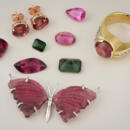
Gem in the Spotlight: Tourmaline
… the power to grant enlightenment, give power over spiritual affairs, reconcile opposites, and change base metals to gold. Tourmaline has a special place in our hearts as California natives because it is one of the few gems that are found…have their own names: Rubellite: is red, pinkish red, orangy red, or pink tourmaline. Indicolite: is dark blue, dark violetish blue, or dark greenish blue tourmaline. Paraíba: is a copper colored blue, intense violetish blue, or …
-
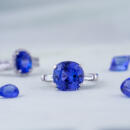
Gem in the Spotlight: Tanzanite
… tanzanite in the world. The tiara also contains 913 diamonds and 803 tsavorite garnets all set in 18 karat white gold. It is owned by former Apple CEO Michael Scott who routinely loans it out for display at museums. Care and Cleaning of … so popular is its color. Tanzanite’s gorgeous color is a captivating mix of blue and purple. The deep hues of violet, indigo, and blue come together in an unrivaled blend only found in tanzanite. Yet, even with its rarity and dynamic …
-
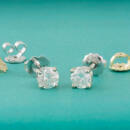
Styles of Earring Backs
… Irritant – If used with costume jewelry made of non-precious metals, it may cause irritation to sensitive skin. Gold options found on more valuable jewelry do not typically have this problem. Lever Backs (European Backs) Lever backs, … a style in mind and don’t know the proper name for it. Maybe you are looking for the perfect gift. Maybe you are having trouble with your current earrings and are looking for alternatives. Or maybe you are simply interested in …
-
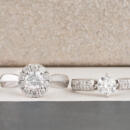
Anatomy of a Ring
… never know it was sized looking at the shank with your naked eye. Over time, the shank can wear thin—yes, even gold and platinum can wear away. In such cases a jeweler can “re-shank” the ring by replacing the metal at the bottom of the …going as far up the sides as the design and the extent of the wear require. If you are careful with your rings (removing them when doing dishes, cleaning with harsh chemicals, gardening, etc.), the shank may last your lifetime and …
-

How Are Lab Grown Diamonds Made?
… the imagination of scientists and visionaries alike. Just like the alchemists of old who sought to turn lead into gold, many have tried to achieve this impressive feat. We have only recently been able to produce gem quality, lab grown …: the belt press, the cubic press, and the split-sphere (BARS) press. The goal of each process is to create an environment of extremely high pressure and temperature where diamond growth can occur. Each process starts with a small …
-
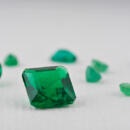
Gem in the Spotlight: Emerald
…and Mrs. O. Roy Chalk in 1972 and can be seen on display at the National Museum of Natural History in a platinum and gold ring surrounded by 60 pear-shaped diamonds. According to workers at the Muzo mine in Columbia, it is one of the … refractive index of emerald ranges from 1.57 to 1.58, making it a moderately refractive gemstone. Its specific gravity ranges from 2.65 to 2.75. One of the distinctive features of emeralds is that they often contain inclusions. …